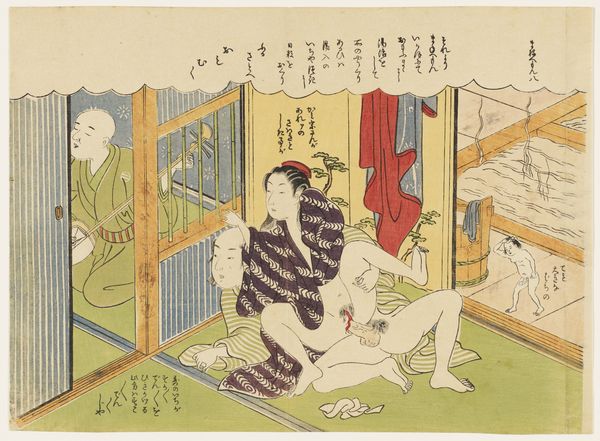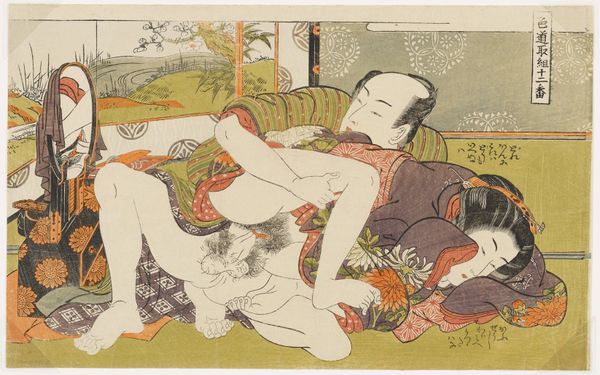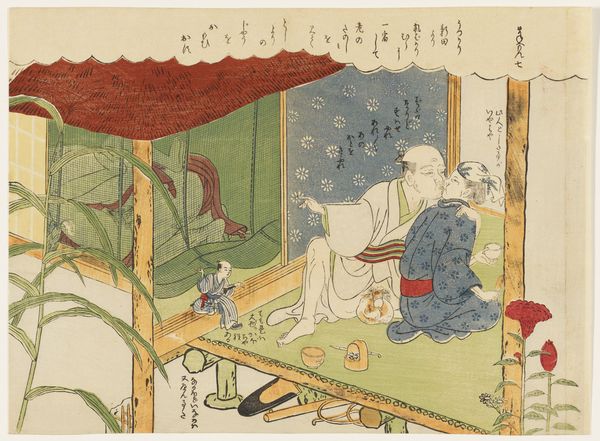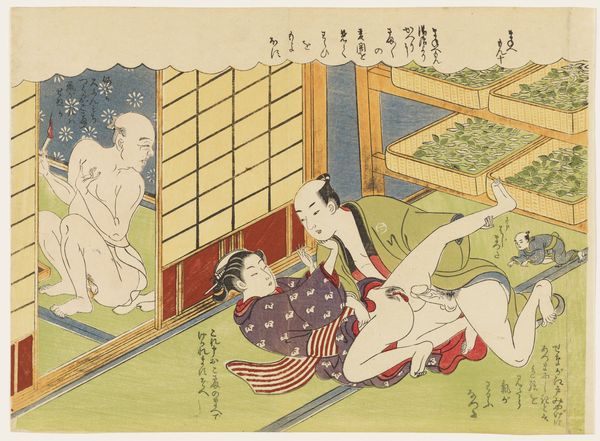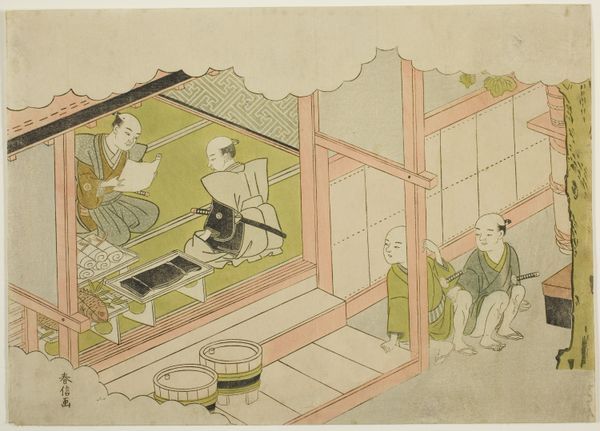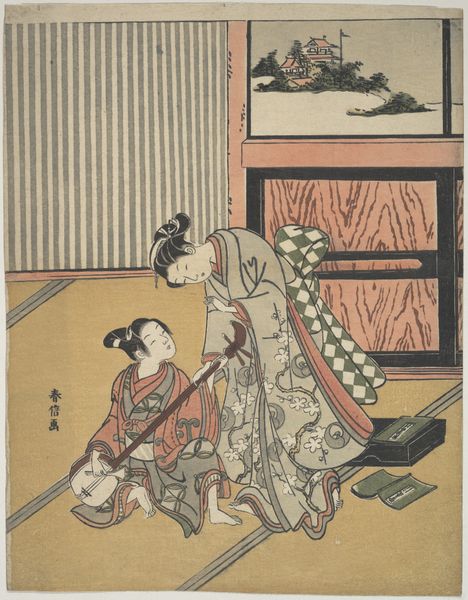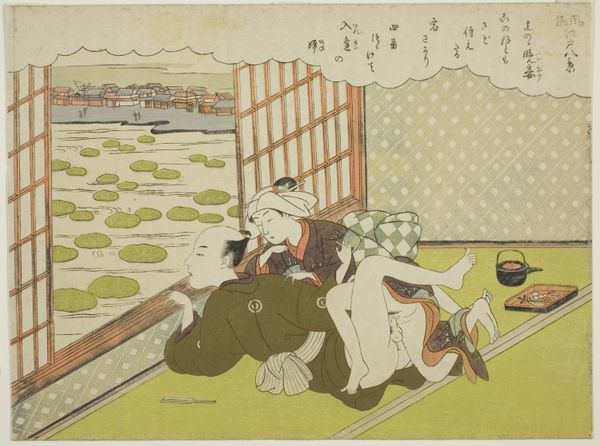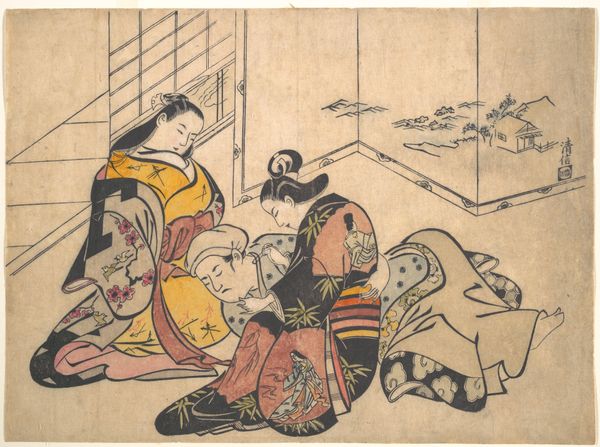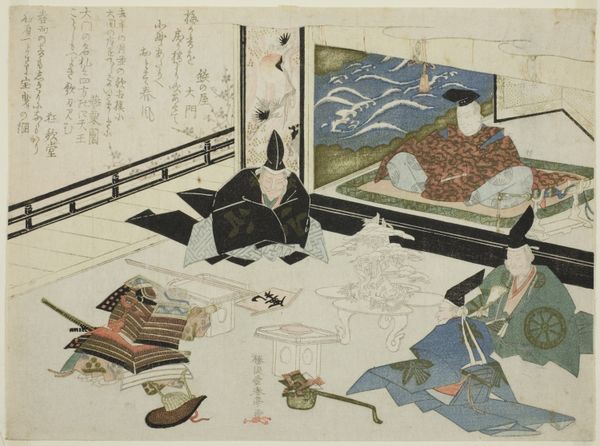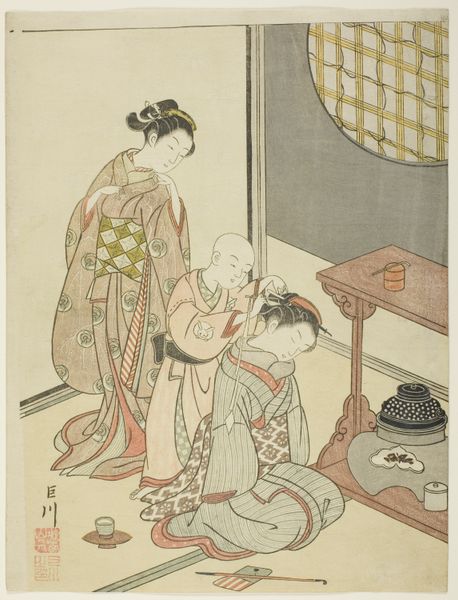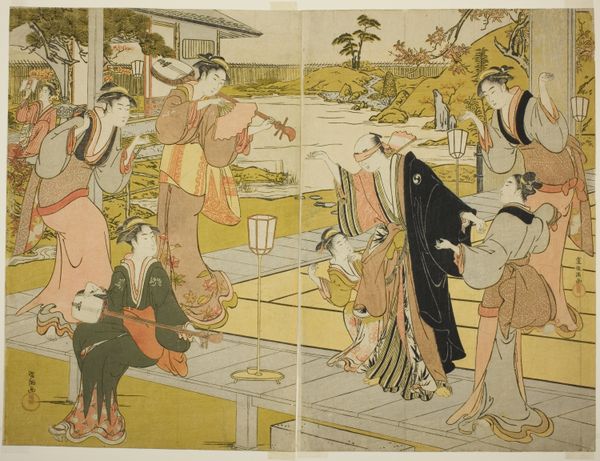
print, paper, ink, color-on-paper
# print
#
ukiyo-e
#
japan
#
paper
#
ink
#
color-on-paper
#
genre-painting
#
erotic-art
Dimensions: 8 5/16 × 11 3/8 in. (21.11 × 28.89 cm) (sheet, horizontal chūban)
Copyright: Public Domain
Curator: Just inside this gallery is a color woodblock print called "Busy Love," created around 1768 to 1770 by the Japanese artist Suzuki Harunobu. It's an example of ukiyo-e, often translated as "pictures of the floating world." Editor: Well, the floating world here seems to be intensely focused. It's immediately striking—a tightly packed composition of figures rendered with very delicate lines, yet the central interaction is so brazen. Curator: That’s right. In Japanese art, especially prints of this period, erotic themes were quite common and integrated into the cultural narrative, suggesting more than just simple titillation. Harunobu, in particular, infused everyday scenes with hidden allusions. What significance might be drawn here, in your view? Editor: For me, there's the overt display, obviously. But it is softened through the process of production. Look at the layers of color painstakingly applied, the subtle gradations achieved with woodblocks—transforming intimate acts into something studied and crafted, blurring the line between artistry and commerce. It almost makes the private public. Curator: Indeed, the artist's technique itself carries cultural meaning. Notice the characters surrounding the act. A doll-like figure sits by another adult applying makeup. What if they reflect the multiple dimensions of love: expectation, vanity, physical interaction all existing side-by-side? Ukiyo-e prints often acted as both aesthetic objects and tools for cultural negotiation. Editor: Agreed. Considering the print's material existence, it points towards how eroticism was being packaged and consumed. Was it a commodity? Certainly. A statement of aesthetic refinement? I would say it straddles the two rather cleverly. What lingers with me is this push and pull between candid sexuality and manufactured image. Curator: Well, it's interesting to consider those contradictions in our contemporary framework. It highlights how persistent—and mutable—the symbology of desire has remained throughout the ages. Editor: Precisely! The blending of public and private domains that feels relevant today had its precursor even in prints from this era. A great look at not just artistry, but a world made material.
Comments
minneapolisinstituteofart almost 2 years ago
⋮
Mane'emon is impressed by a nimble beauty applying moxa to an older woman while simultaneously entwined with her partner; he also applies moxa to himself in the foreground.
Join the conversation
Join millions of artists and users on Artera today and experience the ultimate creative platform.
